- Home
- Rebecca Levene
Grand Thieves & Tomb Raiders Page 9
Grand Thieves & Tomb Raiders Read online
Page 9
The place of the computer in the home was still loose, but it had found a dedicated following of users who spent hours and weeks poring over their machines. Playing games for sure, but also plotting their own. They were a secluded band, but an active one. And when they emerged from their bedrooms and living rooms, it would be to create Britain’s games industry.
4
Pro-Am Games
In the early 1980s the British games market saw one of the most spontaneous, fragmented and lively proliferations of creativity in its history. For a few precious years, the country had a natural resource of self-taught, eager and often ingenious coders, and millions of households with home computers, hungry for games. With such plenty came a flurry of businesses, improvising any way they could to bring bedroom-coded efforts to shops and newsagents around the country.
Yet British gaming didn’t feel corporate: it was ad hoc, unstructured and rather parochial. If anything, it was in an early phase of commercial evolution – alongside the emerging giants were many smaller participants who aspired to join them, and there were myriad ways to survive and thrive. By the time the British computers had seen out their heyday, the games industry bore many hallmarks of professionalisation: large publishers and developers, investment from major media labels, and established brand names. Along the way, thousands of the new coding and publishing outfits had been tested, a few hardy survivors had emerged, and many more wily businesses had found ways to make money around them.
But no matter how robust a developer or a publisher appeared, they were still tethered to the unpredictable timing and skills of lone game creators. Whilst gaming was becoming an industry, the roles of the participants, of coders in particular, were in flux. Some reacted by becoming businessmen, while others wanted to stay true to their programming roots. And while there were plenty who found ways to work the system, to promote their games and even themselves, many others were treated shabbily, and missed out on the rewards of their success.
This was an exciting but volatile era and even the central stories – of companies emerging from the chaos, of professional coders displacing amateurs – aren’t universal. To begin with, in fact, it was the other way around: in its earliest phase, much of the retail games industry looked like the well planned preserve of highly qualified experts.
In 1980, Dr David Potter formed a company called Psion. Potter was the author of a book called Computational Physics, perhaps the earliest textbook on methods for simulating complex phenomena. He was teaching at an American university, watching from afar as an industry was forming around the microchip, decided that the invention was going to transform the world. ‘This was far too exciting to ignore, so I gave up my academic positions,’ he says. ‘That was one of the riskier decisions that I took.’
Potter studied the new home computer industry with an academic’s rigour. He introduced himself to Hermann Hauser and Clive Sinclair, and organised the distribution of their machines to South Africa. It was the era of MK14 and the Atom, and he came to know their users very well. Even this early, a market trend was emerging. ‘I looked at what people were doing with these machines,’ he says. ‘And they were doing nothing, really. They were used by hobbyists: people who worked on mainframes and mini-computers. They were computer junkies who were producing utilities, databases, and a couple of games. And games were the things that were selling most.’ The software market appeared to be under-nourished and open to professionalisation. ‘It was very backward, and quite shoddy the way they did it,’ he says. ‘Just put the disc in an envelope and send it off.’
For the first year of its existence, Psion was an intermediary. Potter looked at the products for sale through tiny mail-order adverts and tried to identify potential winners. His pitch to authors – that he could extend their reach – was compelling; ‘I would repackage the games and sell them to Sinclair and Acorn, and get the companies to distribute them through their channels.’ Psion found tape duplicators in the Midlands and volumes jumped. By its second year, the company’s turnover topped a million pounds. ‘I became a publisher,’ says Potter.
Psion was forging a model that many publishers for the next half-decade would imitate: what started as a conduit for a scattering of homebrew software coalesced into a more formal computer market. Cherry-picking games from mail-order adverts couldn’t guarantee a steady supply of product, though, so as the ZX81 went on sale, Potter took Psion into development. He built a team composed mainly of academics, but found staff in other odd places too. An unemployed teenager called Stephen Kelly wrote to Potter, enclosing a tape of a chess game that worked on the new platform. ‘It was amazing,’ Potter recalls, ‘so I said, “Buy a one-way ticket to London and we’ll pay you for your ticket, and we’ll give you a job!”’ Eventually, Psion asked some of the world’s best-regarded chess experts to come and work with Kelly on building a complicated game into a tiny machine. ‘We won international awards,’ Potter says.
But in its DNA, Psion wasn’t a games developer. ‘The company was kind of serious,’ Potter says. ‘We had a lot of PhDs. These were very educated people in software terms. It was a skilled team.’ Psion invested in high-end development facilities, and produced utilities – databases and spreadsheets. But it was also a market-led business, and as the home computers bedded in, production inevitably skewed towards entertainment. ‘With Sinclair and Acorn particularly, it was about games. They were the dominant driver early on.’ When they turned out to be the richest source of revenue, Psion’s direction was set: ‘You’d be nuts not to follow the market.’
So Psion became a most unusual games company: it had expensive offices in London, and its academically led development team used hardware entirely out of the reach of a bedroom programmer. The jewel in its crown was a VAX machine it bought in 1981. This was a mini-computer capable of feeding code directly into home computers, bypassing their friendly but limiting programming languages, and instead using tools that could exploit every last processor cycle and byte. Compared to the frugality of bedroom coders, Psion’s purchase of the VAX seems profligate, but the company was cash rich, and the £100,000 cost was easily absorbed. ‘We were very confident of the market at that time,’ Potter says. ‘The scale of investment was modest compared to what we were generating.’
The VAX machine allowed Psion to create a software library of unmatched quality, and with it came the industry’s top prize: an exclusive deal with Sinclair. Psion’s games were sold in the same retail outlets as the machines – WH Smith and Boots – where they found a keen market amongst the customers looking to make use of their expensive computers.
Psion was the biggest player in the games industry. For months, theirs was the only company name many customers would see on games software, and from the slick look of Psion’s boxed cassettes with colour inlays, the public might have assumed that software development was the preserve of professionals. It wasn’t quite, though: as well as its own ZX81 titles, the deal covered the games Psion had found in the mail-order market. These were still earning royalties, and the games’ writers enjoyed a sudden, and unexpected, surge in income as the Sinclair delivery channels kicked in.
And then came the real money. Nigel Searle, the managing director of Sinclair Research, approached Potter in early 1982 and told him of Sinclair’s plans to produce a full-colour computer called the ZX Spectrum. Sinclair wanted a lot of software ready for it at the time of launch. And, most importantly, the company wanted a utility tape, with a set of programs to make sure that a new owner without a software library would have plenty to do. ‘He said, “We’ll be packaging one of these into every single unit,” recalls Potter. The sales and the profits could be huge. ‘Flashing numbers!’
Psion negotiated a good price, from Searle’s point of view, but the tapes still earned a margin of fifty per cent – if the ZX Spectrum turned out to be a success, Psion stood to make a fortune. The pack-in utility tape was called Horizons, a portmanteau of well-written but slight utilities and quirky dem
onstrations of programming ideas. It promised buyers that the computer was a worthwhile purchase, that it could sit at the heart of the family and justify its £175 cost. For the child eager to bring a games machine into the house, this was the first line of argument. The tape was packed into the box of every one of the millions of 16 and 48K ZX Spectrums that came off the production line, at a cost to Sinclair of 60p, and a profit to Psion of 30p.
But that was only half of the ZX Spectrum boon. Psion had both a platform-agnostic development team – the VAX could pour code into any home computer with a Z80 processor – and an early look at the Sinclair hardware. From the moment of launch onwards it rolled out a series of tightly programmed and polished games into an empty market.
Its flagship product on the ZX81 had been Flight Simulation. Potter, the author of a book on computing simulations, had designed the flight model from first principles with Psion programmer Charles Davies. It was a full simulator deserving of the name – on a computer with blocky grey graphics and 16 kilobytes of memory – and Searle had the game in mind as a title for the ZX Spectrum. So, with early knowledge of the machine’s specification, Potter and Davies updated the simulation to include enhanced graphical detail, using the new computer’s higher resolution to build the ground from patterns of colour dots. ZX Spectrum buyers were able to persuade themselves that it was like a multi-million pound pilot trainer, but on a home television.
Ready at launch and a natural purchase for new owners – a cerebral-sounding title that showcased the machine and appealed to gamers – Flight Simulation became a huge hit. It sold 250,000 copies in the ZX Spectrum’s first year, meaning that it was played on a sizable proportion of all the machines in existence. But it also had longevity, staying on retailers’ shelves for nearly half a decade and eventually reaching astonishing sales numbers. ‘I think it was about a million and a half in the end,’ claims Potter.
But Psion’s library also featured games submitted by individuals, and the genesis of the company’s other famous gaming brand was much closer to the disorderly brinksmanship that would come to characterise the industry. During the infancy of the ZX Spectrum, an Australian publisher called Melbourne House sent Psion a game based on the arcade classic Pac-Man, written by a young coder called William Tang. It had potential, but was still very basic. Potter’s team of PhDs and their costly equipment were set to work. ‘A lot was done, with them but by us, to transform it,’ Potter says. ‘We upgraded it, did things to the software to improve it, and then packaged it and marketed it.’
According to Potter, marketing decisions at Psion had become team games: ‘We gave prizes for whoever could come up with the name for a product. This character was a kind of a blue splodge moving around, so I put a challenge out as to who could find the right name.’ It proved particularly tricky – the title should suggest Pac-Man but not ape the name, and needed to be both short and memorable.
The problem was solved by a team member who commuted every day from east London. ‘He had a hell of a cockney accent,’ Potter says. ‘And one morning, this guy from the East End came in and said, “Okay then, ’ow about ’Ungry ’Orace?” No aitches anywhere! And we all jumped and said, “Yeah that’s it!”’
The game, and its amorphous blue star, became Hungry Horace. Artwork was completed, the title screen made and a tiny backstory created. And then Potter learnt what any child could have told him: ‘I found out that Hungry Horace was the name of a comic character in The Beano. I didn’t read comics and he had.’ It simply hadn’t occurred to the prizewinner that there would be a problem. ‘He wasn’t aware of the idea of copyright. He wouldn’t have known that you can’t just go and take their name.’
With the project at an advanced stage, Potter tried his luck. ‘I wrote to DC Thompson [The Beano’s publisher] and I said we would like the chance of using your character’s name. It’s a computer game and doesn’t compete with comics at all. It might, however, promote your character. Which was rather rude of me, because they’d been established for fifty years.’
In 1982, games were barely registering as businesses, or vehicles for intellectual property, and it turned out that the East Ender had been right. ‘They agreed! They didn’t even ask for a royalty!’
WH Smith was only one of the retailers for computer games in the UK, but it was the most important. With Psion and Sinclair, it had created, codified and cemented a retail form offering high-quality products. The games even had consistent branding – they bore the Sinclair logo and, for ZX Spectrum games, the rainbow stripe. The games industry seemed professional – part of the new technology boom that was filling the broadsheets with its adverts.
But it didn’t have to be. The infrastructure for distributing software was in place, and neither the retailer nor the customer needed to know much about a game’s origins. Which was lucky, because some time in 1981, Artic’s Richard Turner persuaded John Rowland, the buyer for WH Smith, to stock his titles. And Rowland had no idea that Artic’s entire staff were still at Manchester University, and operating out of student digs.
‘It was a big deal,’ recalls Charles Cecil, the co-creator of Artic’s Adventures series. ‘Except at the time we didn’t realise how significant it was. I remember Richard telling me, and I said “Oh, that’s good”, but it wasn’t a case of cracking open the champagne.’ The news would have warranted it: within months the WH Smith deal had transformed Artic from a trader at Micro Fairs into one of the country’s major publishers. Its cassettes graduated from polythene bags to plastic boxes, but they were the same titles that the pair had sold at trade fairs: Adventures B, C and D, and arcade titles such as Jon Ritman’s Space Invaders clone.
‘I remember ringing up John Rowland and telling him there was a new adventure, and would he like to buy any,’ says Cecil. ‘“Oh yes,” he said, “I’ll have five thousand.”’ The games were sold in shops for £5 a copy, and the students charged WH Smith £3 – a single phone call could raise orders worth tens of thousands of pounds. ‘Thirty years ago, that was a significant amount of money,’ says Cecil. And the orders kept coming.
Turner and Cecil were keen to keep Rowland under the impression that they were full-time businessmen – their greatest fear was that he should discover they were students. They had no phones in their houses, so they made all of their calls using a public phone box, which at the time would beep periodically to demand payment. ‘You would phone somebody up, and it would beep at you, and you had to put your 10p in,’ Cecil recalls. ‘We were desperate that John Rowland shouldn’t realise we were actually calling from a public phone box in the middle of the Oxford Road.’
They were tense calls, with Turner and Cecil holding coins at the ready, hoping they couldn’t be heard clunking into the machine from the other end. Salvation came when British Telecom introduced a new kind of phone box that could be pre-paid, and the young men shifted all of their calls to this model. ‘It was absolutely brilliant,’ says Cecil. ‘But then if you ran out of credit, it would go BEEP BEEP BEEP BEEP BEEP BEEP! There was a terrifying situation where, because the conversation had gone on slightly longer – maybe he was questioning an invoice or something – you could see the timer counting down, and you’re petrified that it’s going to start beeping at you.’
But a phone box and their computers were all the equipment the pair needed to become one of the country’s largest games publishers. After Rowland, their next call would be to the duplicating company, and then to Kall Kwik, the printer – their inlays were still very basic single-colour leaflets, but at least now they came in cassette boxes. Turner and Cecil would then assemble the final product and send the tapes directly to WH Smith. ‘So the whole process took two days,’ says Cecil. ‘It was brilliant! WH Smith thought we were wonderful!’
At the weekend, the pair would meet at the burgeoning company’s headquarters, issue an invoice to their only customer, and pay their suppliers. ‘For a short time, it was the most extraordinary business,’ says Cecil. ‘We made an absolute
fortune in no time at all.’ And then they spent it all again.
Cecil and Turner may have been the vanguard of the gaming industry, but their success quickly attracted sharks. As novice businessmen with a cash-rich company, they were obvious marks for con men and, as Cecil puts it, ‘we fell in with some really dodgy people’. One solicitor, who later went to prison, recommended an accountant to manage their tax bill, which, for a high-margin business such as theirs, threatened to be vast. They met the accountant in London, ‘in what was clearly a serviced office,’ Cecil says, and he offered them a solution: he would raise an invoice for a quarter of a million pounds, which they would pay the day before the end of the tax year – he absolutely, definitely promised to pay it back to them afterwards.
They didn’t fall for that one, but Cecil and Turner did spend a lot of money on retail agents who charged for contact details rather than for sales. And they decided to splash out on, according to Cecil, some ‘appalling television advertising’, which was an expensive, untargeted way of reaching the narrow specialist market of people keen on computer games.
And in the heady rush of cash, they also lost track of the core reason for their success. ‘Common sense now tells you it’s all about the products,’ says Cecil, but they had come to care more about the marketing, and even here the competition caught up with them. Artic had become used to a market where a giant, repeat buyer stocked a small number of games, which had a long shelf life. But the shelves were starting to fill up – with an eighty or ninety per cent profit margin, any company could enter the market, and any with a decent product would thrive. Soon a tide of high-profile publishers swept Artic aside. These were companies that knew how to attract developers, and gamers, and vast amounts of publicity.

 Smiler's Fair: Book I of The Hollow Gods
Smiler's Fair: Book I of The Hollow Gods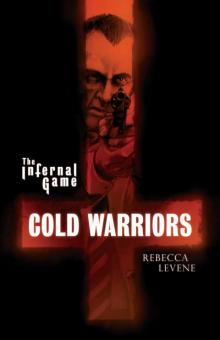 Cold Warriors
Cold Warriors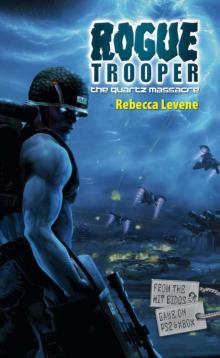 The Quartz Massacre
The Quartz Massacre The Hunter's Kind: Book II of The Hollow Gods
The Hunter's Kind: Book II of The Hollow Gods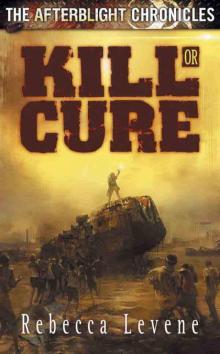 Kill or Cure
Kill or Cure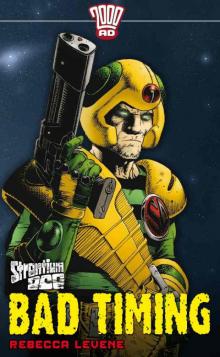 Bad Timing
Bad Timing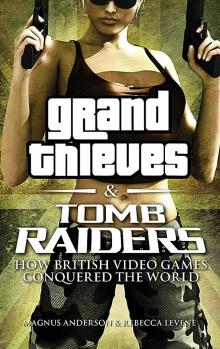 Grand Thieves & Tomb Raiders
Grand Thieves & Tomb Raiders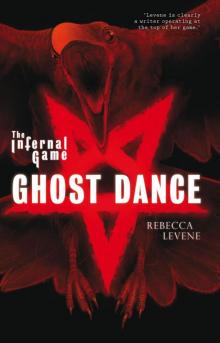 Ghost Dance
Ghost Dance Anno Mortis
Anno Mortis